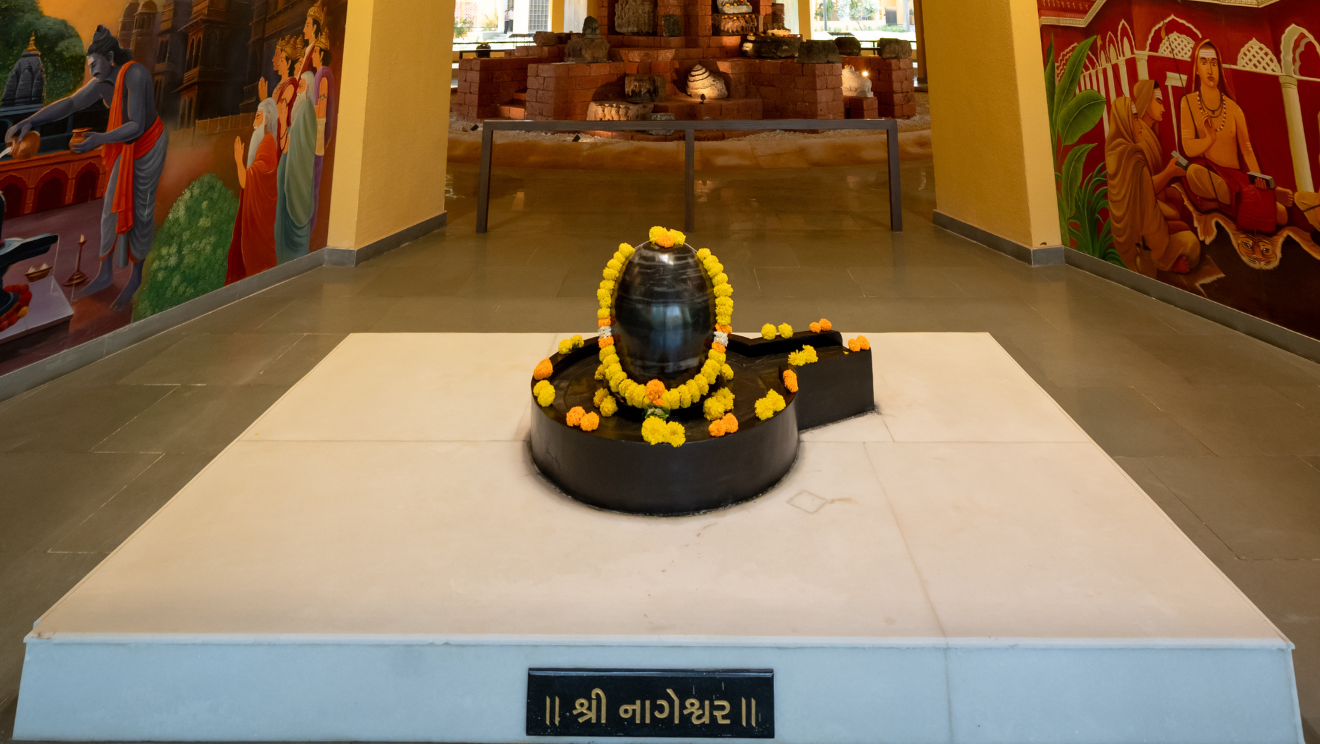
Devotees believe that those who worship at Nageshwar attain a poison-free mind and body, protected from negative energies and fear.
Nageshwar, one of the twelve Jyotirlingas of Lord Shiva, is located near Dwarka in Gujarat. The name "Nageshwar" means “Lord of serpents,” referring not only to Shiva’s association with snakes—like Vasuki, the serpent adorning his neck—but also to his power to neutralize all forms of venom—be it physical, emotional, or spiritual.
The Legend of Supriya and the Demon Daaruk
The legend of Nageshwar Temple centers around a demon named Daaruk, who terrorized the region and imprisoned a devotee of Shiva named Supriya. Even while in captivity, Supriya continued chanting the holy mantra ‘Om Namah Shivaya’, undeterred by the threat of death. His unwavering devotion created a divine resonance that reached Kailash, summoning Lord Shiva.
Shiva appeared in a fierce form, vanquished Daaruka, and liberated Supriya and the other prisoners. At this sacred spot, a Swayambhu (self-manifested) Shivalinga emerged from the earth, which is worshipped even today as the Jyotirlinga of Nageshwar.
Unfolding the Vision: Installation in Progress

Daruka and the Divine Forest
Interestingly, the demon’s wife, Daruka, was a devout follower of Goddess Parvati. Through deep penance, she gained the goddess’s favor, and in return, Mata Parvati blessed her with mastery over a forest where she meditated.
This forest came to be known as Darukavana, named in her honor. Despite her devotion, her association with evil ultimately led to the downfall of her husband at the hands of Lord Shiva.


Spiritual Significance
Nageshwar Temple is not just a site of victory over evil, but a place that represents the purity of devotion, the power of mantras, and the protective embrace of the divine. Pilgrims visit to seek inner peace, healing, and courage to overcome toxic influences—just as Supriya did. The towering Shiva statue near the temple serves as a powerful reminder of the Lord’s eternal presence and might.
